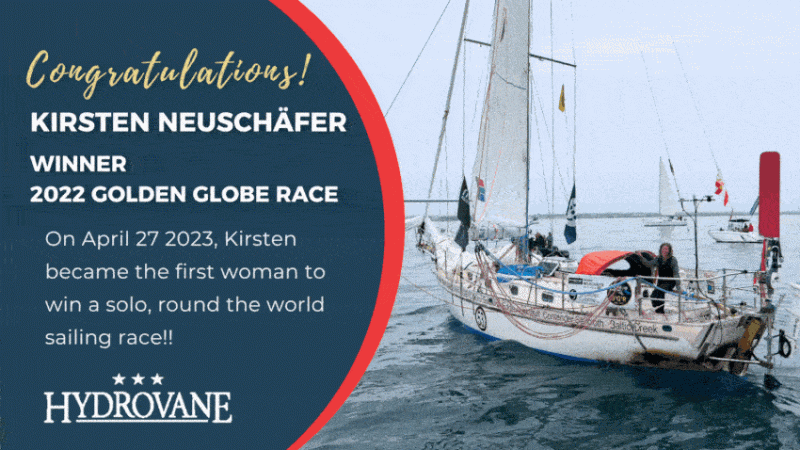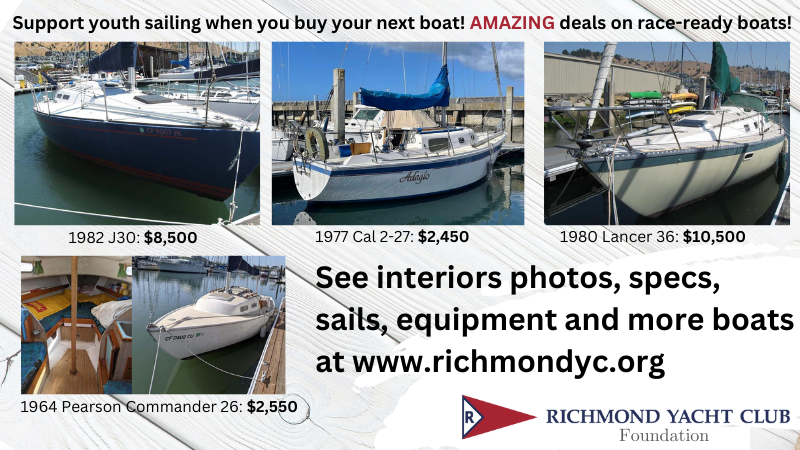
Cruising and Racing at Treasure Island on New Year’s Day
San Francisco Bay east of Treasure Island was unusually busy for a Wednesday afternoon — but it was business as usual for New Year’s Day. About the time that a race was starting there, another group was cruising into Clipper Cove, an anchorage sheltered by Yerba Buena Island to the south and Treasure Island to the north.
The Race Out
The very casual race was courtesy of the Master Mariners Benevolent Association. The MMBA’s tradition is to race from TI to Point San Pablo Yacht Club, where the sailors celebrate the New Year with a chili cook-off and potluck.
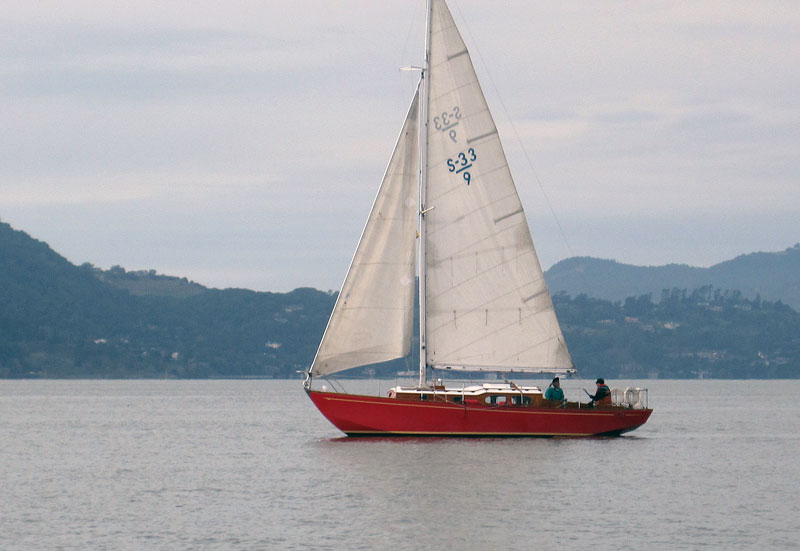
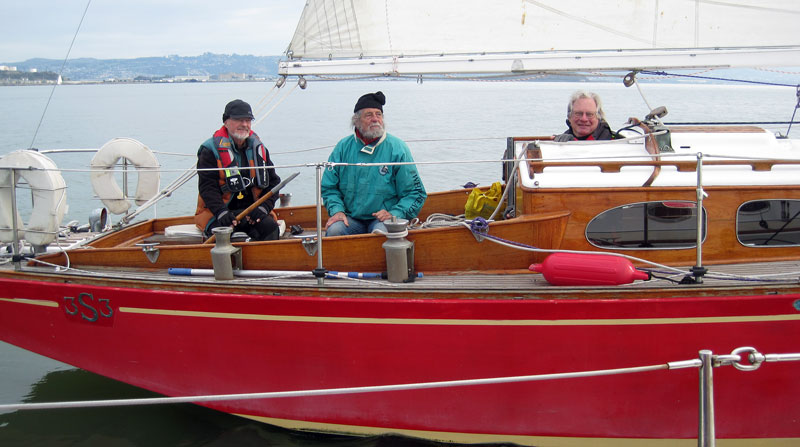
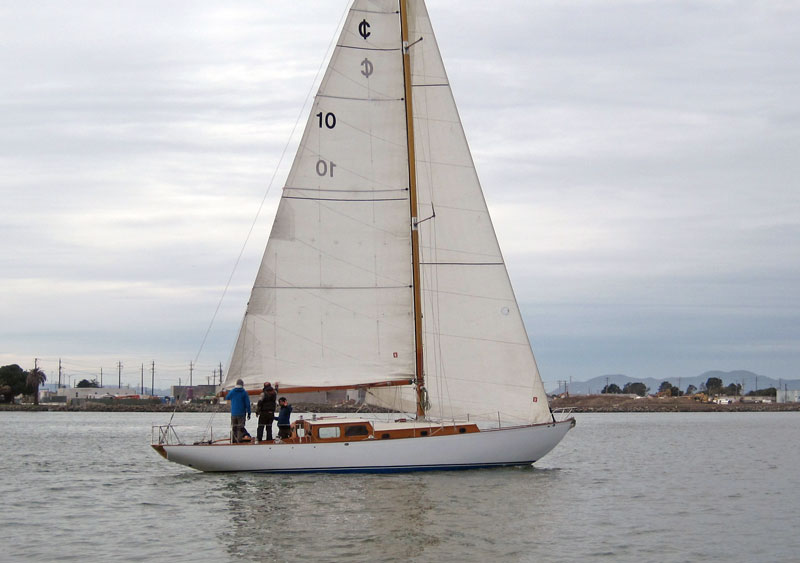
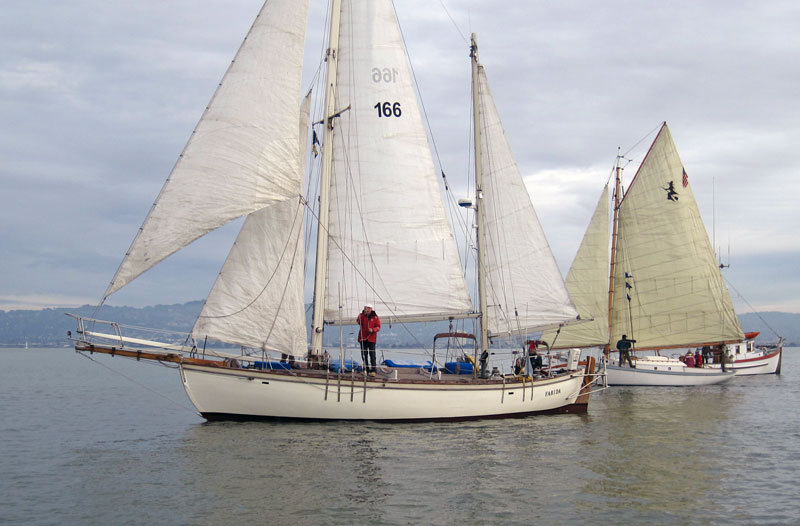
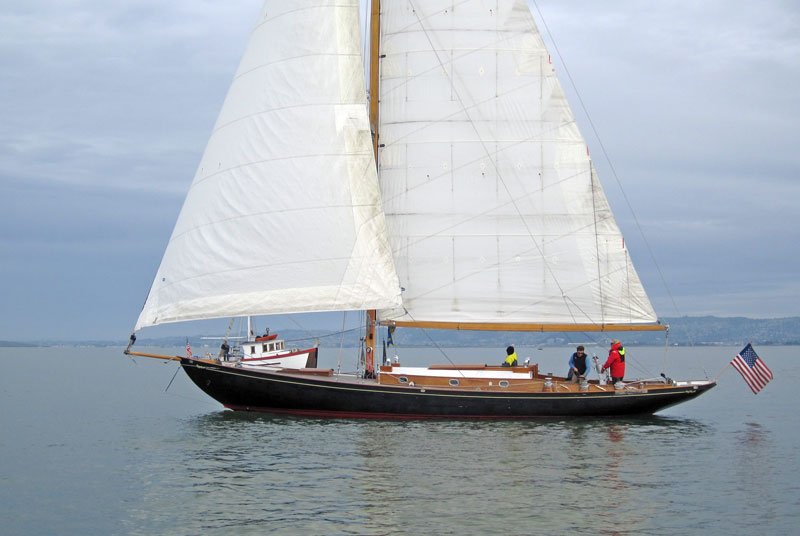
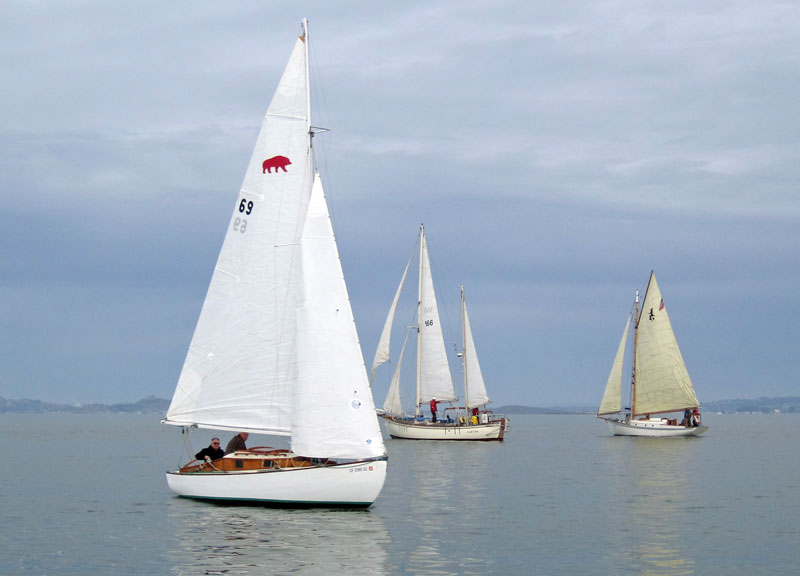
The Cruise In
Following the brief pause to take pictures of the New Year’s Day Race start, we on Bob Johnston’s Richmond Yacht Club-based Alerion 38 Surprise! entered Clipper Cove and tied up to the Farallone Clipper Hana. The cruise-in was even more casual than the race, with no Organizing Authority. It’s basically just a group of friends rafting up, also for a potluck, including holiday leftovers. The big hits of this potluck were Stephen Buckingham’s Louisiana-style crab chowder and Rachel Porter’s homemade San Francisco sourdough bread. This was the ninth year of the gathering.
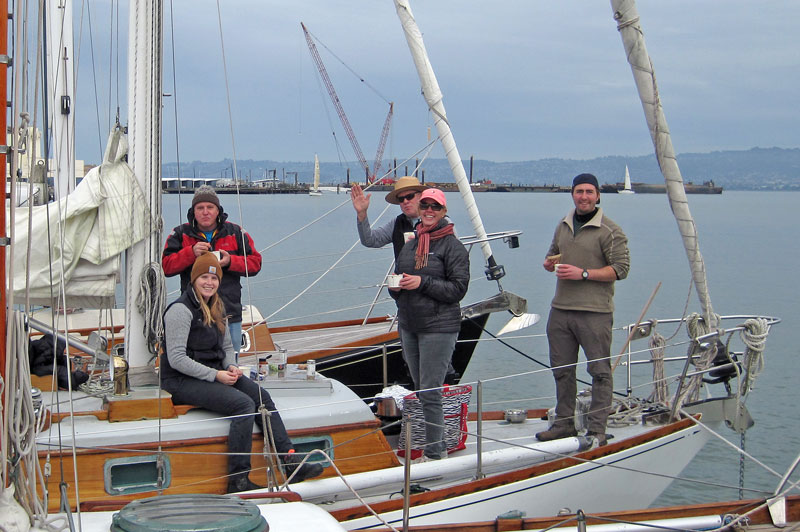
Richard vonEhrenkrook, the ringleader of the cruise-in, had planned to come on his Cal 20, Can O’Whoopass, out of San Francisco YC, but Atom Farrell, who owns Brigadoon, invited Richard and crew to join him. Richard told us that Brigadoon’s keel goes from 4 feet, 6 inches to 9 feet. “She’s bluewater-capable, but we’re not afraid of getting out of Clipper Cove.”
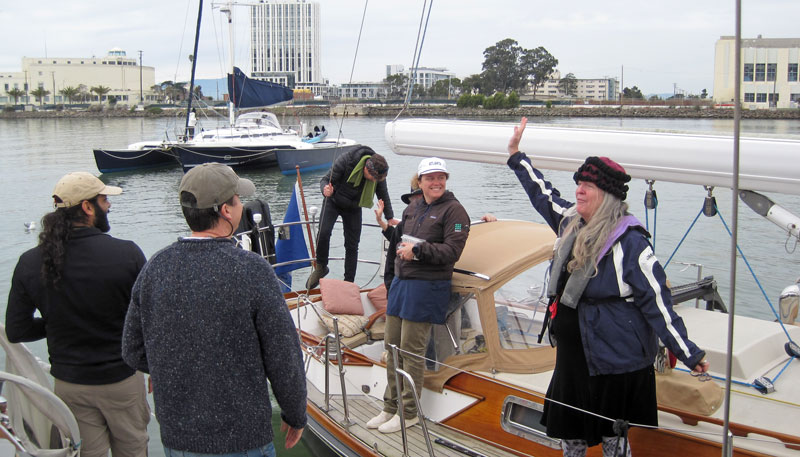
The weather forecast we heard on KCBS that morning called for “bright skies with some overcast.” Well, which is it? Turns out it was mostly overcast, with little to no breeze midday, but a decent (though cold) northeasterly later in the afternoon. These conditions made for mostly motoring to Clipper Cove, but allowed for a nice sail back to various Bay Area homeports.
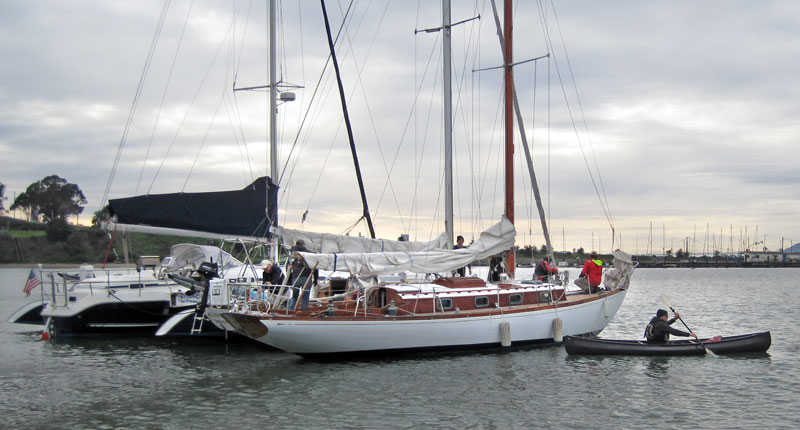
The Story Behind December Caption Contest(!)’s ‘Mona’
December’s Caption Contest(!) of the catamaran Mona making her way through rough seas received dozens of comments. One comment in particular that caught our attention was from reader Joe Siudzinski. After submitting his caption “I really should have a look to see what noise was …” he shared a link to the background story of the Iroquois catamaran shown in the photo. And although the story has a couple of “holes” we thought readers might be interested in learning more about the boat with the missing piece.

The story was published in 2009 in the German boating magazine Yacht. Mona, a 31-ft plywood catamaran, was built in England by multihull sailboat designer and sailor Rod Macalpine-Downie. Yacht wrote that Mona’s German owner and two crew were sailing her from Harwich (presumably England) to her home port of Brouwershaven (presumably The Netherlands) when the section of boat broke away at the centerboard box that was “flanged directly to the hull.”
“The forces that acted on the outstretched centreboard were too great: the centreboard box tore out of the hull. The fact that the boat did not sink immediately is thanks to the inner wall of the centreboard box, which became the second side of the boat,” Yacht reported.
“At half past six in the evening, the rescue cruiser “Koopmansdank” was alerted by the rescue station “Neeltje Jans” to come to the aid of a sinking boat. When it reached the “Mona“, it was taking on water, but was able to continue its journey to the outer harbour of the Roompot lock at the mouth of the Oosterschelde under its own power, accompanied by the rescue cruiser. Given the extensive damage to the starboard hull, it is almost a miracle that the boat was able to reach the harbour without outside assistance.”
The story explains that the centerboards of the Iroquois catamarans built by Macalpine-Downie in the 1960s were “retracted in heavy weather to take the weight off the centreboard box.”
“The owner of the German yacht “Mona” had obviously forgotten to do this in the rush of the inclement weather — and lost the entire centreboard off the Dutch coast near Walcheren.”
The writer then continued with some background information on the catamarans and their evolution.
“Iroquois catamarans were among the pioneers of ocean-going double hulls in the late 1960s. The German Rudolf Wagner crossed the Atlantic single-handed in 1967 with his “Hobby”, an Iroquois of the first design. Just over a year later, YACHT (issue 14/68) sailed an identical boat and capsized during test runs on the IJsselmeer in 6 to 7 force winds. After the test, experience gained from the sea emergency led designer Macalpine-Downie to make extensive changes to his design in order to offer an even safer and more stable touring catamaran in the MK II version. This improved model was also the one that lost the centreboard box, but this was probably due to the fact that the aged ship had now had to withstand the rough conditions on the North Sea for almost 40 years. Despite the safety changes in the second version of the Iroquois, it is surely a coincidence that the inner wall of the torn-off centreboard box also formed a second side of the ship and that the emergency ended so lightly.”
Thanks to Joe Siudzinski for bringing this story to our attention. You can read more Captions here.
Steering the Dream With Hydrovane
Hydrovane is your best crew member: an independent self-steering windvane and emergency rudder/steering system … ready to go!
How Does One Prepare for Pacific Cruising These Days?
We received the following letter from readers and Good Jibes listeners Susanna Mahoney and Cliff Clark, who are planning to sail south with the Baja Ha-Ha in the fall. They are trying to figure out the best way to confront the huge increase in choices available for boat preparation since Cliff last went cruising 20 years ago. We thought Latitude 38 readers could help.
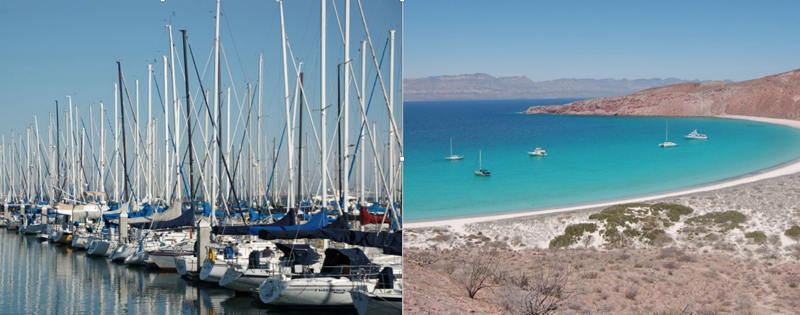
“My husband and I subscribe to Latitude 38 and enjoy the Good Jibes podcast regularly. Thank you for all the effort you put into both.
“We are planning to embark on a year-long cruising adventure aboard our 40-ft ketch from Marin to Costa Rica and across the Pacific to Australia, starting with 2025’s Baja Ha-Ha. My husband did this same trip 20 years ago but so much has changed with regard to safety, navigation, and coms equipment that we’re hoping you might be able to refer us to an experienced Pacific cruiser who might let us pick their brain on a variety of topics.
“With the plethora of information online, we frequently find ourselves deep down rabbit holes for even the simplest of questions about every single piece of equipment. Beyond just the frustration of the time suck, we find ourselves without a clear answer at the end. It seems every sailor has a different opinion.
“If you can recommend a person, people, or a website — something like a Consumer Reports for cruisers — with whom we might connect, we’d very much appreciate the help.”
Warm wishes for a Happy New Year,
Susanna Mahoney and Cliff Clark
Remember when before “booking flights online” there were “travel agents?” Latitude 38‘s Heading South page does have the First Timer’s Guide to Mexico and Pat McIntosh’s Cruising Notes, but we know there are endless more sources of good advice. How do you narrow them down?
Surfing the Baja Ha-Ha Aboard ‘Sweetheart’
The Santa Cruz 52 Sweetheart is on the cover of our December issue reaching south in a nice breeze and with a beautiful asymmetrical spinnaker. But her crew did more than just sail. In our current issue, crew members Jeremy Snyder and Maddie Zug (who are planning to do the Ha-Ha on their own boat) wrote about finding the surf in Turtle Bay and Bahia Santa Maria.
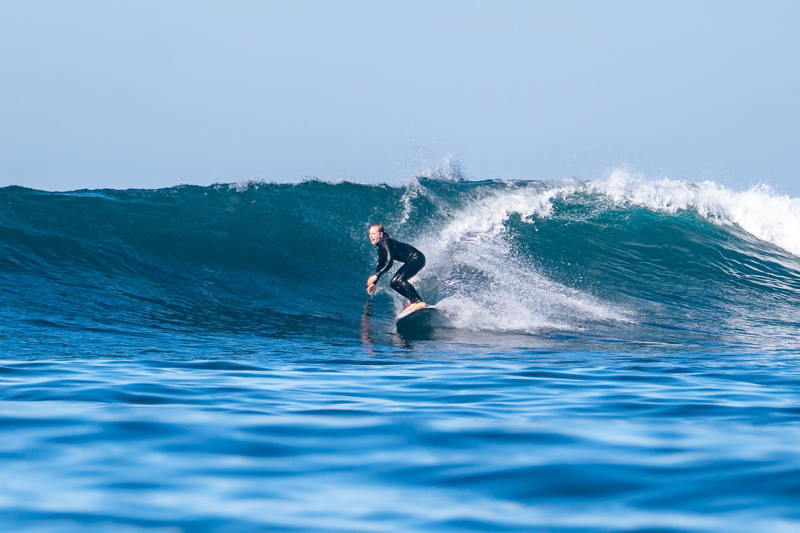
The story starts, “In addition to the 30th annual Baja Ha-Ha being the year of fishing and spinnakers, we did our best to make it the year of surfing.
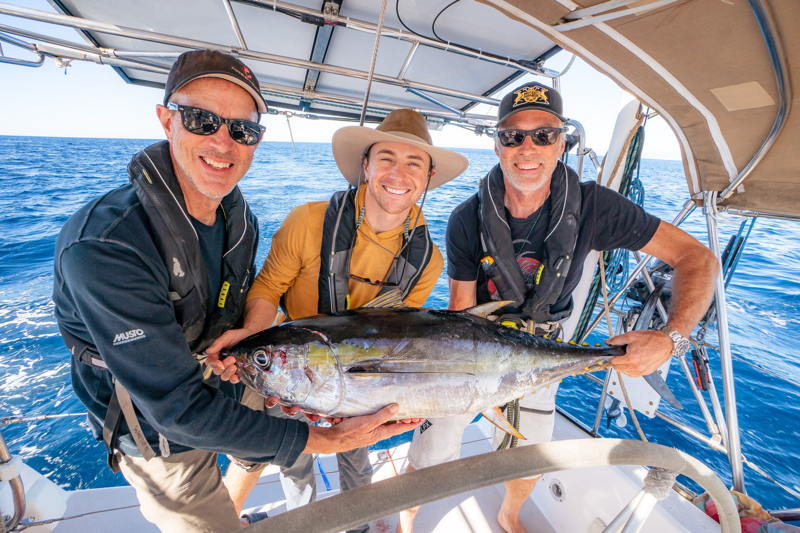
“Our journey began in the San Diego airport trying to convince an Uber driver that, yes, an 8-foot board would definitely fit in the back of his car. We were thrilled to be crewing the Ha-Ha on Sweetheart, a Santa Cruz 52 skippered by Sally and Michael Aldridge. Their partnership with Al Ramadan, known as Crystal Voyager Expeditions, had a distinguished history of surf exploration across the Pacific. We were eager to contribute to this legacy. When we asked them about flying a board out from Berkeley for the journey, their reaction was immediate: “Bring it!”
That’s a good start to any sailing, surfing, fishing story. Read the rest of the story here.
Sailing With the Upper Classes
One of our love/hate feelings for sailing is the almost infinite variety of classes of boats that exist. Every one of them has great attributes reinforcing the owner’s belief their fleet is the upper class. What we love is the creativity, ingenuity, culture and regional communities that form around each class. What we hate is the impossible number of classes to support, with each trying to hold on to critical mass for one-design racing or collaborative fleets.
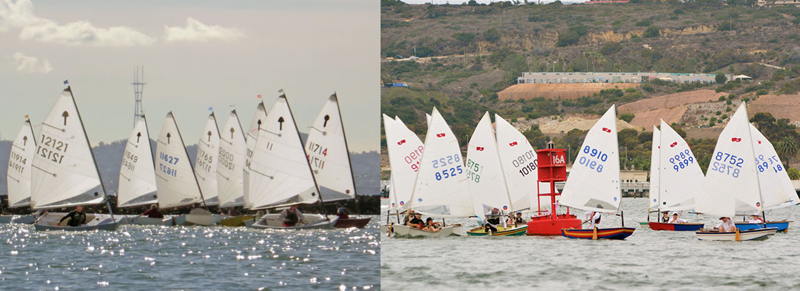
Sailors are inveterate tinkerers, and no boat is ever good enough. As soon as a boat is built it needs an upgrade, tuning or some other alteration. Sometimes that means a class design needs improvement, but every so often, someone comes up with a “better boat” that will save sailing. In tennis, once you’ve bought your racquet you’re done with the equipment and you start playing tennis.
The problem with one design is sailors all seem to want something different, so today there are almost enough designs to have one for every sailor. This means thousands of different one-design fleets with too few boats in them. This is why sailing became one of the early sports to focus on the currently fading-from-favor diversity, equity and inclusion — at least as far as boats were concerned. Rating systems enable a huge variety of designs to race together on an approximately fair basis, as long as the conditions and course selection favor your boat. Ratings have attempted to make sure everyone is invited and feels included, though equity has been harder to achieve.
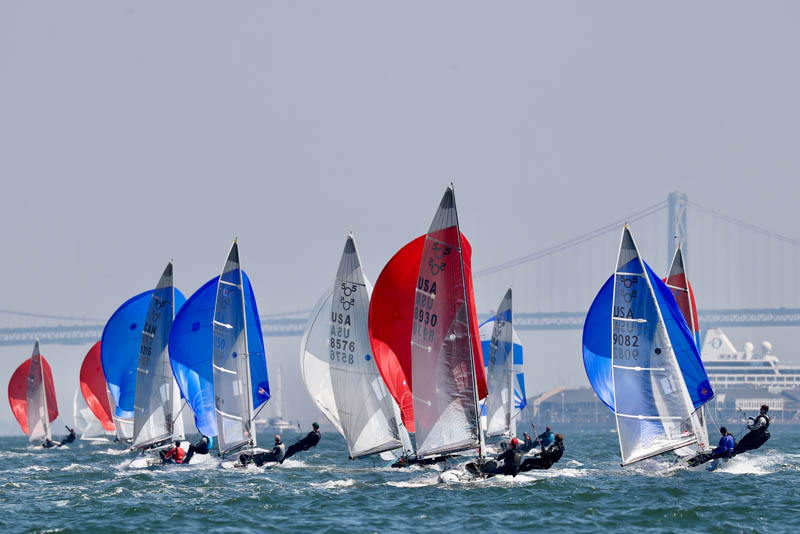
We do love the fact that there are so many classes that are adopted by different regions: San Francisco Bay with the El Toro, Folkboat, Knarr, Bird, J/105, Express 27 and on and on. We may have the largest Alerion 28 fleet in the country. Newport Beach may have the largest fleet of Harbor 20s, though Annapolis, Maryland, also has a huge fleet. Inverness Yacht Club on Tomales Bay has one of the nation’s most active 110 fleets. We think the Monterey Peninsula Yacht Club has the only West Coast fleet of Shields one-designs. Newport, Rhode Island, is another hotbed of Shields racing. We can’t possibly keep up with it all.
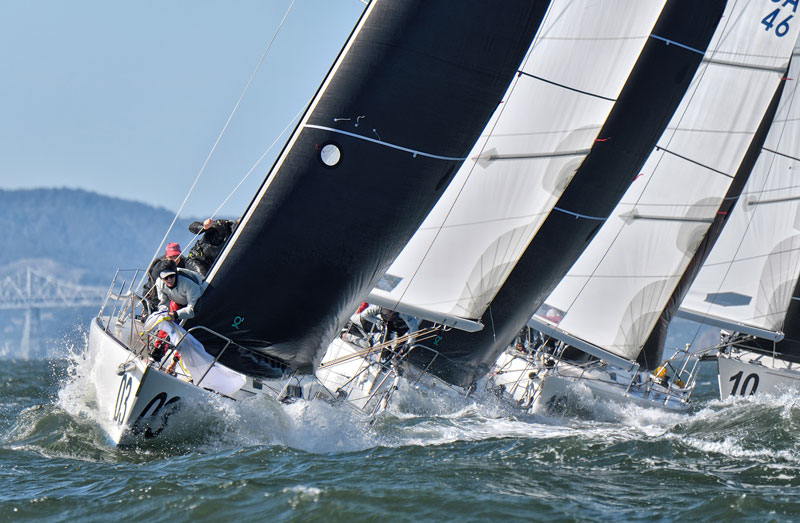
The Midwest is known for scows but also has huge fleets of Lightnings, Thistles and much more. They also currently have a large fleet of TP52s (Transpac 52s, pioneered by West Coast designer Bill Lee and others) on the Great Lakes. New England has Beetle Cats, Turnabouts and a thousand other classes. FJs, 420s and ILCAs (Lasers) are everywhere. So are Hobie Cats. The Alamitos Bay Yacht Club has a fleet of Tempests. J/Boats are also everywhere. Cal 20s are in San Pedro. Talk about diversity! What class is at the center of your club or harbor?
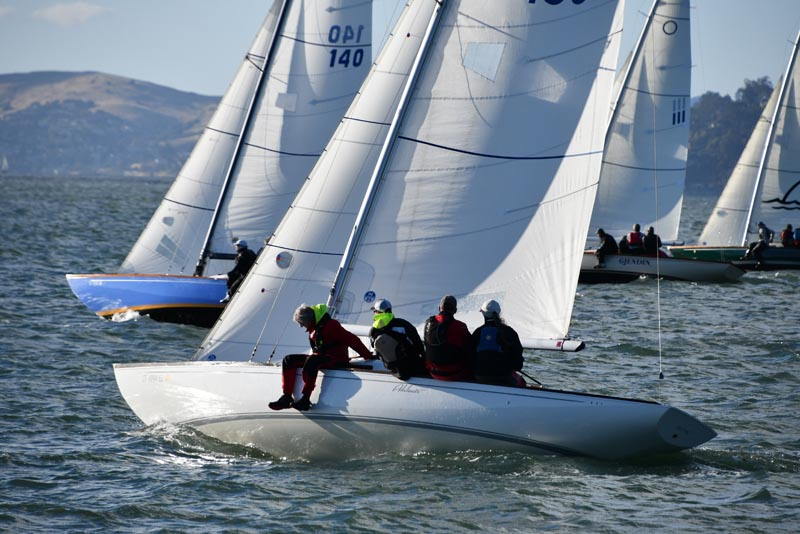
This is just the lightest scratch on the surface of a deep dive into the classes that predominate in any particular harbor or club. We think of Moore 24s at Richmond and Santa Cruz Yacht Clubs, though we know they’re scattered across many Northern California clubs. Richmond has El Toros and SCYC has Jesters. That is until GMOs came to sailing when the Opti monoculture came along. Sailing in a huge fleet of Optis is great for race training, but it feels like having all the local coffee shops replaced by Starbucks. It’s a difficult culture shift as we strive for efficiency and economies of scale and lose local flavor.
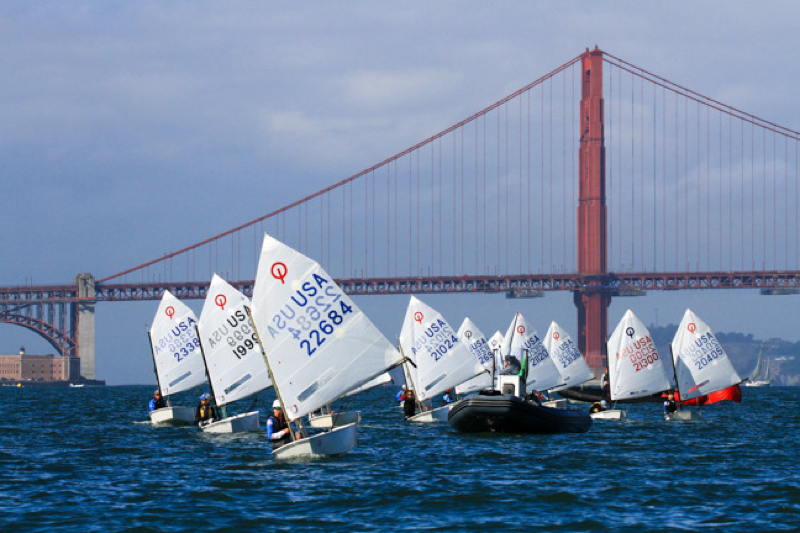
The diversity of fleets across the country or the world is an endless topic of discussion. And new designs seem to come out weekly. These thoughts were triggered by emails from both Andrew Lesslie and Samantha Chiu telling us how Sequoia Yacht Club has rebuilt a fun, active Open 5.70 fleet in Redwood City (story coming soon). Mike Dorgan and friends have rebuilt an active Finn class on San Diego Bay. The Star (est. 1911) and the 5O5 (est. 1953) designs are decades old, but boat construction, rigging, tuning and sails are still being refined by dedicated aficionados who love their class. These and many more classes have their passionate participants.
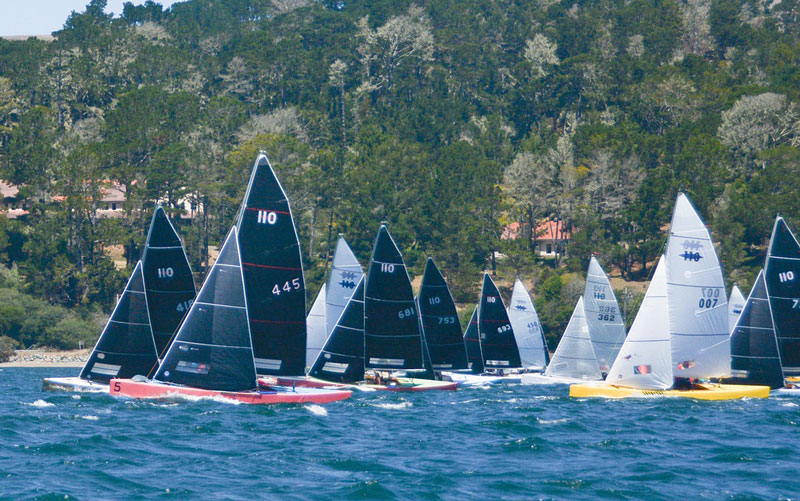
There are so many boats dangled in front of us it’s a wonder that we decide at all. However, it’s that first boat that often elicits the most memories and affection. The first solo sail in an El Toro, Opti, Sabot, Jester, Sunfish, or Turnabout, or sail with a friend on a Lido 14, Blue Jay or Fireball (remember them?) created great memories for hundreds of thousands of sailors. New boats are forming new memories. How would you ever decide which fleet to join? After covering stories about all these fleets, we find sailors are generally really great people and the fun you have afloat is more about the people than the boat. Some classes attract more technical people, others are more athletic, others more tactical, but we rarely meet anyone who doesn’t like being out on the water with their friends, regardless of the boat.
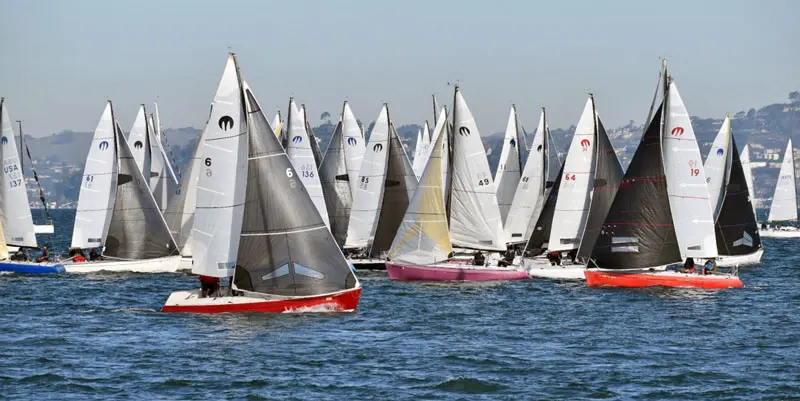
The issue of gathering critical mass in fleets happens all the way up and down the food chain. At the top end there are people racing megayachts, Wallys, Perini Navis or, alternatively, perhaps they should have bought a J Class sloop. Difficult decision. There are maxis, mini-maxis, TP52s, Santa Cruz 70s, MOD70s and no shortage of every almost-possible permutation of sailing technology combined into a huge variety of options. Cal 40s still rock! Most industries are trying to reduce the number of SKUs, but not sailing. We keep growing our options. Foiling is adding the latest wrinkle to the mix. We’re still not sure how a lot of these new foiling dinghies land on a dock or pull out on a hoist, but we’re sure they will find their fans and they’ll have fun.
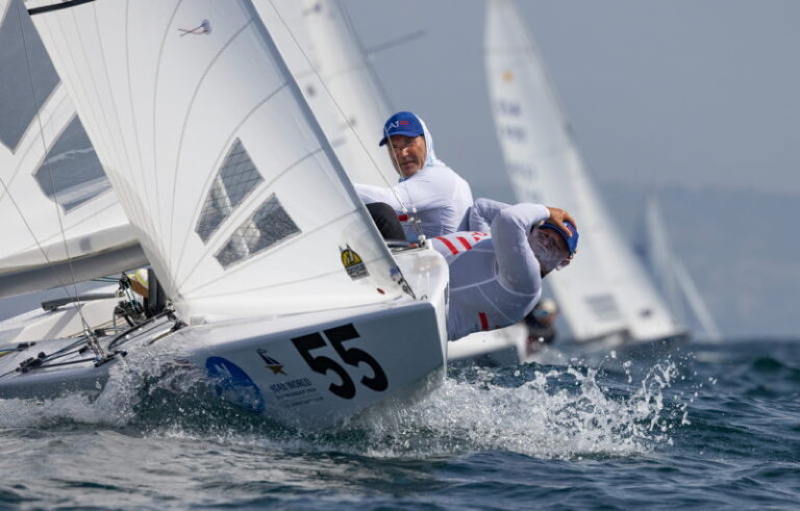
Each of these many classes has a few well-established home base clubs. We’re wondering what your club is known for. Some clubs are more cruisers than racers, but most clubs have a class or two that stand out like those pictured here. The West Coast hub for 110 sailing is definitely Inverness Yacht Club. Who would claim to be the hub for Santa Cruz 27s? Is there a hub for Hobie 33s? Columbia 5.5s? Etchells 22s? Solings? A Melges 15 fleet is getting established in Southern California.
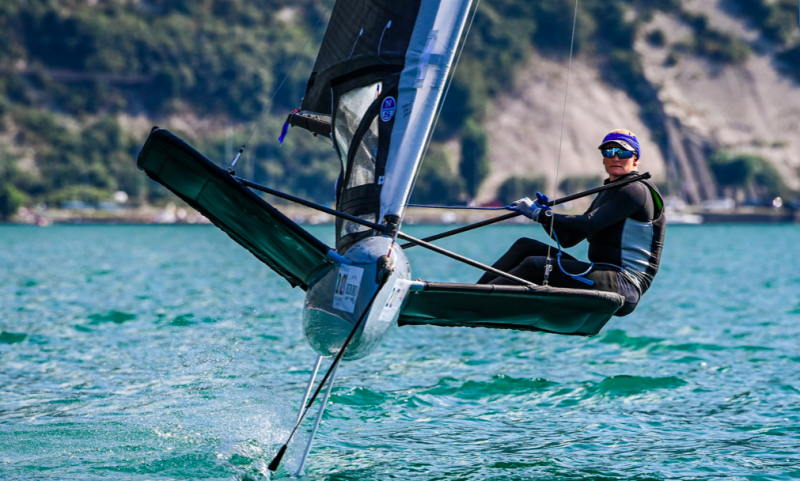
The classes not listed here would keep you reading past your bedtime, but we’re interested in hearing from folks about some of these classes not mentioned. The one you grew up sailing. A class that your yacht club is known for. A class you’re trying to grow. The variety is almost infinite and there’s certainly a class for you.
If you’re looking to join some racing on the Bay, you could look at the recently distributed Northern California Sailing Calendar or put your name on the crew list. Sailing in multiple fleets is a good place to start. You might find wet, wild, athletic dinghies the perfect fit, or it might be the culture and heritage of wooden boats, or you might want to head offshore to dodge whales in the ocean. There are lots of options.
Whichever way, when you join a class, you can rest assured it will be your ticket to meeting great people, having fun, and being in the upper class.
Support Youth Sailing When You Buy Your Next Boat
Great deals available now through the Richmond Yacht Club Foundation.

